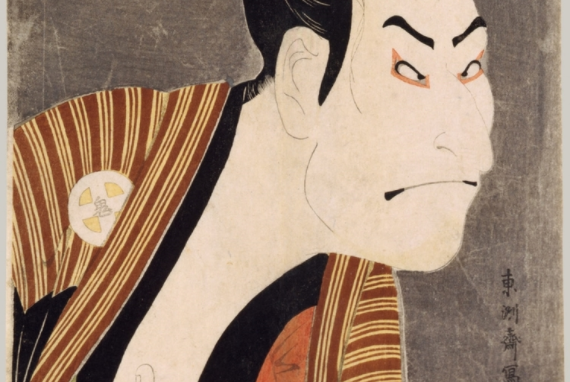Japan's Revolutionary Artist: Hokusai
"I had a habit of sketching things since the age of 6, and at 50 my paintings started gaining recognition. However, all my work until 70 was not worthy of attention. At 73, I began to understand the shapes and structures of various creatures and plants. When I become 86 my skill will become even finer, and at 90 I understand all its secrets. By 100 would my skill reach the realm of the divine? Then, after the age of 110, every dot I draw would be as if it had life."
-Katsushika Hokusai
Katsushika Hokusai (1760- 1849), most famously known for his series of Mt. Fuji prints, was a revolutionary artist of the late Edo period. At a time when interaction with other countries was strictly restricted, Hokusai incorporated not only various Japanese styles but Western styles to his works as well, and was recognized both domestically and internationally.
While little is known about Hokusai’s childhood, it is said that he started to draw from the age of 6. At 14 he became a pupil of Shunshou Katsukawa, beginning his career as an ukiyo-e (genre of woodblock prints and paintings during this time) artist. After a while, he leaves Katsukawa and visits other styles, gets deeply involved in the world of comedic poems, kyōka (狂歌) and develops his own style of drawing. He illustrated books as his fame grew in Japan. At around the age of 60, he produced an illustration book for those studying his drawings, which is now known as “Hokusai Sketches” or “Hokusai Manga” (北斎漫画).
One of Hokusai's most popular prints, "The Great Wave off Kanagawa," a part of the series "Thirty-six views of Mt. Fuji."
It was in his 70's when Hokusai produced his most known work, “Thirty-six views of Mt. Fuji” (冨嶽三十六景). Around this time he also started to incorporate Chinese and European styles, further refining his technique. Hokusai has left various types of works, ranging from Western style drawings with perspectives and a realistic watermelon, to powerful, colorful dancing women and outrageous shunga (春画, erotic drawings).
Filled with originality and pride, Hokusai was never satisfied with his work. On his deathbed at the age of 90, he said, “If God was to grant me 5 more years of life, I would have become a true artist.” Despite his self-criticism, his recognition in Japan and the world express his greatness. Over 150 years after his death, his works continue to fascinate and inspire people all over the world.
Sumida – the Home of Hokusai
While he is known to have moved over 90 times throughout his lifetime, Hokusai lived mostly in the Sumida area of Tokyo. Many of his works depict the area, and they sometimes include landmarks that can still be seen today, such as the Ryogoku bridge and Ushima Shrine. Today, the area is a mix of modernity and traditional Edo.

Hokusai's rendition featuring the Ryogoku bridge, which crosses the famous Sumida River and can still be seen today.

Tokyo Skytree stands in present-day Sumida, the area where Hokusai lived throughout his life. Mt. Fuji can be seen in the background ©Tokyo-Skytree
The giant red lantern of Sensoji, a symbol of the Sumida area, can be found at the end of rows of shops and stalls selling traditional handicrafts, treats, and sweets. ©TOKI
Tokyo Skytree, with its staggering height of 634m, is one of the newest landmarks of Sumida and Tokyo. Not only is the view from the top breathtaking, but the shopping center at its base, known as “Solamachi,” features traditional arts and goods as well as trendy shops.
About a 20 minute walk away is Asakusa (浅草), known for Sensoji Temple and its iconic red lantern. Wear a yukata (casual summer outfit made of cotton), take a tour on a rickshaw, or experience cultures from all over Japan at “Marugoto Nippon,” a facility that open at the end of 2015.
Ryogoku (両国) is another place nearby where one can still find the traditional atmosphere of Edo. Learn about history at the Edo Tokyo Museum and watch Japan's national sport, sumo wrestling, at Kokugigan. Celebrating the works of Hokusai, the nearby Sumida Hokusai Museum opened in 2016 as well.
Why not explore the area where Hokusai lived throughout his life?
RELATED ARTICLES



